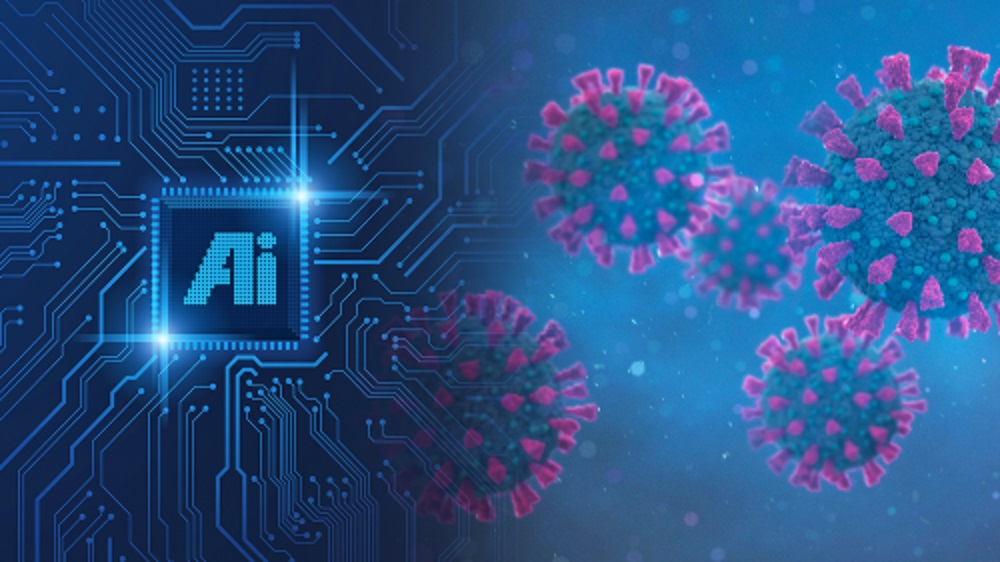
Cutting-edge technology revolutionizes COVID-19 diagnosis through lung ultrasound images, offering swift and accurate detection. Researchers at Johns Hopkins University developed an automated tool akin to facial recognition, which swiftly identifies COVID-19 indicators in lung ultrasounds, easing the burden on overwhelmed healthcare facilities. This innovation extends beyond COVID-19, with potential applications in wearable diagnostics for various pulmonary ailments, empowering individuals to monitor their health proactively.
In a groundbreaking development, artificial intelligence (AI) has emerged as a powerful tool for detecting COVID-19 in lung ultrasound images, akin to the prowess of facial recognition software in identifying faces in a crowd. This innovative research signifies a significant stride in AI-driven medical diagnostics, bringing healthcare professionals closer to swift and accurate diagnosis of patients afflicted with COVID-19 and other pulmonary ailments. The culmination of this effort, detailed in a recent publication in Communications Medicine, holds promise for alleviating the burden on overwhelmed emergency rooms during the early stages of the pandemic and beyond.
A Paradigm Shift in Medical Diagnostics
Led by senior author Muyinatu Bell, the John C. Malone Associate Professor of Electrical and Computer Engineering, Biomedical Engineering, and Computer Science at Johns Hopkins University, the research team embarked on a mission to develop an automated detection tool to aid physicians grappling with high patient caseloads in emergency settings. This tool, reminiscent of facial recognition algorithms, swiftly analyzes ultrasound images of the lungs, pinpointing signs indicative of COVID-19 and other pulmonary complications. Bell envisions a future where wireless devices equipped with such diagnostic capabilities could empower individuals to monitor the progression of COVID-19 from the comfort of their homes.
Pioneering Applications of AI in Healthcare
The implications of this research extend far beyond the realm of COVID-19 diagnosis. Co-author Tiffany Fong, an assistant professor of emergency medicine at Johns Hopkins Medicine, underscores the potential of AI-driven tools in revolutionizing point-of-care diagnostics. Beyond COVID-19, wearable ultrasound patches could monitor conditions like congestive heart failure, alerting patients to fluctuations in lung fluid levels and prompting timely medical intervention or adjustments in medication. This paradigm shift towards wearable diagnostic technologies heralds a new era in personalized healthcare, where individuals are empowered to proactively manage their well-being.
Unraveling the Mechanics of AI-Driven Diagnosis
Central to the success of AI-driven diagnosis is the meticulous analysis of ultrasound lung images to identify characteristic features known as B-lines. These bright, vertical abnormalities serve as hallmarks of inflammation in patients with pulmonary complications. Leveraging a deep neural network, a sophisticated AI architecture inspired by the intricate workings of the human brain, the research team trained their software to discern these subtle abnormalities from a blend of real patient data and computer-generated simulations.
Overcoming Early Challenges
In the nascent stages of the pandemic, scientists encountered formidable challenges in leveraging AI for COVID-19 diagnosis due to a dearth of patient data and a limited understanding of the disease’s manifestations. Lingyi Zhao, the first author of the study and a former postdoctoral fellow in Bell’s lab, recalls the hurdles faced in achieving peak performance of their algorithms. However, through ingenuity and perseverance, the team devised a solution: harnessing computer-generated datasets to train their AI models, thereby circumventing the limitations posed by the scarcity of real-world patient data.
Shaping the Future of Healthcare
As AI continues to permeate various facets of healthcare, from diagnostics to personalized medicine, the potential for transformative impact grows exponentially. By seamlessly integrating AI into clinical workflows, healthcare providers can enhance diagnostic accuracy, streamline patient care, and alleviate strain on healthcare systems. The convergence of AI and wearable technologies opens avenues for proactive health monitoring and early intervention, empowering individuals to take charge of their health and well-being.
Ethical Considerations and Future Directions
However, the widespread adoption of AI in healthcare necessitates careful consideration of ethical implications, including patient privacy, algorithm bias, and equitable access to diagnostic tools. Moreover, ongoing research endeavors seek to expand the utility of AI beyond COVID-19 diagnosis, exploring applications in disease prognosis, treatment optimization, and population health management. As AI continues to evolve, collaborative efforts between clinicians, researchers, and technology innovators will be paramount in harnessing its full potential for the betterment of global healthcare.




